Freshwater Aquaculture
Freshwater aquaculture is the practice of raising and breeding aquatic animals and plants for commercial reasons in ponds, reservoirs, lakes, rivers, and other inland waterways (including brackish water), all of which play an essential role in the aquaculture sector. Freshwater aquaculture, or the captive growth of freshwater creatures, is quickly gaining worldwide recognition. Aquaculture now accounts for almost one-third of total seafood output (freshwater and marine), with freshwater fish accounting for the majority (42 percent). Freshwater aquaculture systems, which range from intensive pond or cage-based systems to vast stocking of enclosed water bodies, are critical for rural people's nutrition and livelihood. These systems are frequently connected with agriculture and make use of farm by-products. Finfish and crustaceans, as well as mollusks, amphibians, and reptiles, are among the species produced.
- Freshwater Ecology
- Freshwater Biology
- Freshwater Fish
- Freshwater Aquaculture Resources

Perry Raso
Matunuck Oyster Farm, United States
J L Giovanna Hesley
Education Emerita, CropKing Inc., United States
Virendra Kumar Goswami
Indian Institute of Technology, India
Amit Das
Memorial University of Newfoundland, Canada
Mandeep Kaur
Panjab University, India
Pavarot Noranarttragoon
Department of Fisheries, Thailand



Title : Application of Artificial Intelligence and NISAR satellite to study the air sea CO2 exchange and aquatic toxicology to develop ‘Aquatic Pollution Remediation Technologies’(PART)
Virendra Kumar Goswami, Indian Institute of Technology, India
Title : Conditionally pathogenic microparasites (Microsporidia and Myxosporea) of mullet fish potential objects of mariculture in the Black and Azov Seas
Violetta M Yurakhno, A. O. Kovalevsky Institute of Biology of the Southern Seas of Russian Academy of Sciences, Russian Federation
Title : New approaches to assessing and managing the multispecies fishery in the Gulf of Thailand
Pavarot Noranarttragoon, Department of Fisheries, Thailand
Title : Integrating art, science and rural development: The multifaced role of aquarium keeping
T V Anna Mercy, Kerala University of Fisheries and Ocean Studies, India
Title : Seaweed aquaculture policy gap analyses in Indonesia, Kenya, and Tanzania
Megan Considine, The Nature Conservancy, Puerto Rico
Title : Utilizing art to enhance learning STEM subjects required for aquaculture
J L Giovanna Hesley, Education Emerita, CropKing Inc., United States